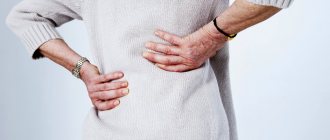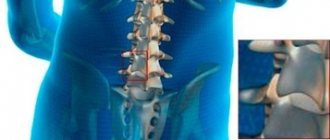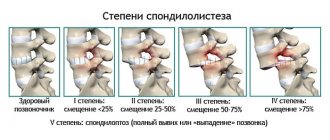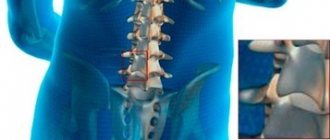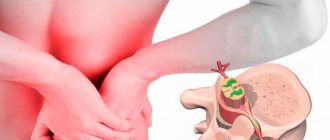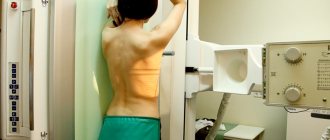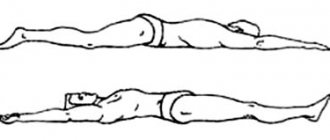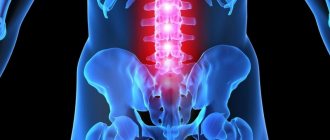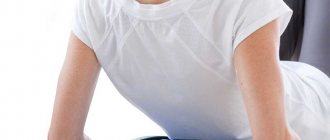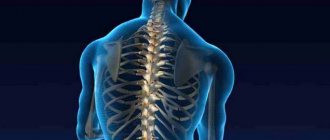Therapeutic back massage is an effective and safe procedure, which is not just a way to eliminate discomfort and pain in the back, but also one of the components of complex treatment for a number of diseases, not only of the spine, but also of internal organs. In addition, therapeutic massage has a beneficial effect on a person’s overall well-being, his mental state and has virtually no contraindications. Therefore, this pleasant procedure is recommended for almost everyone.
The benefits of therapeutic massage
It is known that the condition of internal organs is closely related to the health of the spine. After all, it is in it that the spinal cord and a huge number of nerve fibers responsible for the sensitivity of the skin, the functioning of muscles and internal organs pass through. Leading a sedentary lifestyle or, conversely, regularly performing hard work, as well as a number of other factors, negatively affect the condition of the spine. They lead to displacement of the vertebrae, depletion of the intervertebral discs, the formation of pathological curves of the spine, etc.
All this cannot go unnoticed. Any deviation from the norm in the spine provokes a disruption in the transmission of bioelectric impulses along nerve fibers, and therefore a disruption in the functioning of the organs and systems associated with them.
Therapeutic massage can prevent the occurrence of such problems, as well as help correct the situation with minor changes. In more complex cases, manual therapy sessions will be indicated.
The main difference between therapeutic massage and manual therapy is a more superficial effect on the tissues of the back and the absence of a direct effect on the spinal column.
Correctly selected nature and intensity of the impact during therapeutic massage have a beneficial effect on the condition of the skin, subcutaneous fat and muscles. But only a qualified specialist can correctly assess the situation and the required level of impact so that the procedure is beneficial and does not provoke the occurrence of pain.
The use of therapeutic massage techniques can improve the functioning of the nervous system, muscles, and activate blood and lymph flow. Active kneading of the skin with subcutaneous fat and muscles leads to:
- eliminating stagnant processes;
- active blood flow to the affected area;
- acceleration of metabolic processes;
- saturation of tissues with oxygen;
- improving skin condition;
- improving the quality of transmission of nerve impulses;
- improving posture;
- activation of endorphin production;
- eliminating psychological stress.
A correctly performed procedure helps increase the number of actively functioning capillaries from 30 to 100 on each individual square millimeter of skin.
What is osteochondrosis?
Osteochondrosis or degenerative damage to all elements of the musculoskeletal system especially affects the vertebrae and intervertebral discs, disrupting their trophism and tissue structure.
Depending on the location, it can be cervical, thoracic and lumbar . Recently, due to a sedentary lifestyle (long sitting at the computer and other gadgets), the disease has become dramatically younger.
Pathological processes lead to loss of elasticity of the cartilage disc , the clearance between the compressed vertebrae decreases. The nerve roots of the spinal cord trunks adjacent to the vertebrae also suffer from this, and the spinal muscles experience greater tension.
With osteochondrosis, the elasticity of the intervertebral disc decreases
Pain in the back , heart or other organs (radiating or radiating), poor posture, numbness of the limbs, headache, weakness and other symptoms are inevitable
Due to degeneration of disc tissue (especially the fibrous ring), complications of osteochondrosis : protrusion or deformation of part of the disc and intervertebral hernia, when the disc nucleus pulposus protrudes into the spinal canal or outward.
The effectiveness of therapeutic massage
Since therapeutic massage also involves muscles, proper impact on them can increase the elasticity of muscle fibers and accelerate the breakdown of lactic acid, which is especially important for athletes and people engaged in heavy physical labor. Thus, the procedure helps reduce the risk of injury, muscle tears and significantly reduce the intensity of pain after active training. That is why all professional athletes regularly use therapeutic massage services.
5 minutes of therapeutic massage ensure restoration of muscle performance to a greater extent than half an hour of passive rest.
The procedure allows you to:
- reduce muscle wasting;
- strengthen ligaments;
- activate microcirculation;
- saturate tissues with nutrients and oxygen;
- increase the intensity of removal of metabolic products;
- increase the elasticity of muscle fibers.
After therapeutic massage sessions, most patients feel cheerful and energized.
As for the positive effect of therapeutic massage on the state of the nervous system and spine, it helps to:
- activate the conductivity of nerve endings;
- increase the relationship between muscles, internal organs and the nervous system;
- reduce the intensity of pain of various origins;
- increase the tone of overly relaxed muscles and decrease the tone of overstrained, spasmodic muscles;
- increase performance;
- reduce nervous tension;
- improve sleep quality.
Therapeutic massage has a positive effect on the immune system. Therefore, its regular implementation makes it possible to increase resistance to infectious diseases, which is especially important in the spring-autumn period.
Video lesson: learning to massage the lumbosacral region
The art of massage is one of those types of knowledge that will always be useful. It is not difficult to learn the basic techniques of a relaxing or therapeutic technique: nowadays there is a lot of special literature and training videos where any technique is explained step by step, precise instructions for action are given, and attention is drawn to the features of each procedure. For example, by watching video lessons from the Master Class school, you can master the correct technique for segmental lumbar massage. This procedure is performed along five main paired lines:
- the first is paravertebral, runs near the spine, along the longissimus dorsi muscles;
- the second is the central scapular;
- the third, fourth and fifth - on the posterior, middle and anterior border of the axillary fossa.
Massage of the lumbar spine involves influencing the area between the lower line of the ribs and the tailbone, bypassing the gluteal area. During the lesson, the master introduces the basic techniques:
- Stroking, which can be quite intense due to the density and tension of the skin in this part of the back. An alternating grasping movement is performed with the back of the hand.
- Rubbing: the effect is aimed at the paravertebral (paravertebral) muscles, in order to relax them and improve blood circulation. The lateral surfaces of the sacrolumbar region are treated using the intersection technique - versatile friction with the inner edge of the hand.
- Kneading: on the longest muscles, it is carried out with the pads of the thumbs, moving down to the tailbone. On the sides, a two-handed circular technique is used, the movements of which resemble kneading dough.
- Vibrations: they are performed with your fingertips, without unnecessary pressure, continuously. Intermittent vibration or shock techniques can harm nearby internal organs, so their use on the lower back is prohibited.
- Alternate other stages and end the session with light strokes.
Remember that direct impact on the spinal column is prohibited: the slightest awkward movement can lead to unpredictable consequences, including immobilization. Only a chiropractor can correct the vertebrae.
Indications for therapeutic massage
It is recommended for every person to undergo a course of therapeutic massage once a year, especially those leading a sedentary lifestyle or actively involved in sports. This will be a good prevention for the development of spinal diseases and back pain.
Also, therapeutic massage sessions are carried out for:
- persistent or regularly occurring aching back pain;
- scoliosis 1 degree;
- increased nervous excitability, irritability, or vice versa apathy;
- chronic fatigue syndrome;
- hypotension and muscle hypertonicity;
- osteochondrosis;
- radiculitis;
- sciatica and lumbago;
- frequent colds;
- regular exercise, especially traumatic sports;
- recovery from sprains and other injuries.
When performing a procedure to improve posture and correct spinal disorders, the effect is aimed only at muscles: toning those that are overly relaxed and relaxing those that are too tense. This indirectly contributes to the alignment of the spinal axis, but for a deeper and more effective effect, manual therapy is used.
Therapeutic massage can be performed on people of almost any age, provided there are no contraindications. It is often combined with other types of treatment, including drug therapy, exercise therapy, physical therapy, etc.
Is there any effect from lower back massage?
Of course, after regular massaging of pain points there is a noticeable effect. However, one-time visits will not give the desired result. It is unlikely that long-standing diseases will be cured after the first visit to a massage therapist. But even the initial session will provide relief from aching pain, increase the mobility of the lumbar region, and relieve spasm and tension.
For a complete recovery, it is important to carefully follow the entire range of measures to get rid of the disease: take vitamins and tablets, use ointments, attend physiotherapeutic procedures.
Lumbar massage is useful both for people with an active lifestyle and for those who are used to leading a sedentary lifestyle.
Types of therapeutic massage
There are several types of therapeutic massage, differing in the method of influencing the body:
- classic – performed by specialists with medical education and gives the most pronounced general strengthening, health-improving effect;
- point – the method is based on influencing certain points responsible for the functioning of specific organs;
- vibration massage is a hardware procedure performed using a special device that creates oscillatory movements of different frequencies.
They also include hydromassage and cupping technology. But only the classic type of massage can be called truly therapeutic, since it involves not only the skin with subcutaneous fat, but also the muscles.
Cost of massage course
The price of one procedure in salons in Moscow and St. Petersburg depends on the level of the medical institution, the qualifications of the receiving specialists, as well as the area of the massaged surface and the duration of exposure.
Treatment of the lumbar region can be considered as a separate procedure, a type of segmental massage. In this case, 30 minutes of specialist work is estimated from 350 rubles to one and a half thousand. If this is part of a general relaxing or therapeutic back massage, then the patient will have to pay from 1,350 to 3,000 rubles for an hour-long session.
Therapeutic massage techniques
There are 4 main massage techniques used in therapeutic massage. This:
- Stroking – involves sliding movements over the surface of the skin with different pressure levels, aimed at improving skin breathing. They can be clasping, comb-shaped, flat, forceps-shaped or rake-shaped, but in each case the skin folds do not move.
- Rubbing is a more active action in which the skin moves and stretches in different directions, which increases lymph and blood circulation in the area of influence. It can be straight, circular, spiral. The massage therapist can also use shading, crossing and sawing techniques.
- Kneading - involves fixing a skin fold, followed by squeezing, squeezing and rolling. This leads to increased muscle contractility, stretching of the fascia and elimination of muscle tension.
- Vibration is a technique in which oscillatory movements of the massage therapist’s hands are performed. Continuous and intermittent techniques are used in different cases.
Consistent application of these techniques by a qualified specialist allows you to achieve pronounced results, which can be assessed after the first sessions. After the first session, pronounced muscle relaxation and elimination of the feeling of fatigue are observed. After the third, the pain decreases or completely disappears. At the end of the course of therapeutic massage, patients are cheerful, full of strength, energy and completely recover from a state of chronic stress.
Preparatory activities
If the session is carried out at home, then the patient needs to properly prepare the place. This can be a rug on the floor or a bed with a hard mattress. It is important that all the necessary tools for the master’s work can be placed nearby. The massage will be most effective if you need to prepare for it:
- An hour before the start of the event, you should refuse to eat or drink high-calorie drinks.
- Immediately before the massage you need to go to the toilet (the bladder and intestines are freed).
- It is advisable to take a shower or bath with warm water.
- You should relax as much as possible and concentrate on the positive aspects.
- Before the massage, active exercises that slow down the pulse or breathing are prohibited.
It is better to entrust massage for lower back pain to a specialist, but the relationship between the master and the patient is not the last point. They should be as confidential as possible so that the patient can relax during the session.
Therapeutic neck massage differs significantly from conventional relaxing techniques
Features of performing therapeutic massage
The procedure is carried out in a special room on a massage table. The patient lies on the couch on his stomach, places his arms along the body and bends them slightly at the elbows. To increase its comfort and ensure the correct position of the spine, special cushions can be placed under the forehead, chest and abdomen.
The specialist performing the massage must pre-warm his hands and apply massage oil to them. In addition to making it easier for hands to glide over the skin, the oil has a warming effect on soft tissues and tones.
Each therapeutic massage session begins with stroking techniques performed with both hands. The movement begins from the lumbosacral spine and ends in the area of the supraclavicular fossa, axillae and iliac crests. With deeper stroking, the specialist discovers the most problematic, painful areas, to which he will subsequently pay special attention.
The next stage of the procedure is rubbing, which is carried out over the entire surface of the palm, with the pads of the fingers or the edge of the palm. Depending on the situation, the doctor combines different techniques and types of rubbing, which allows for maximum active blood flow to the affected area. Finish the rubbing with rhythmic stroking and immediately proceed to kneading.
At this stage, the specialist’s hand movements are active, the skin gathers into folds and moves in different directions. They can be descending, ascending, longitudinal or transverse. Sometimes the impact can be compared to the process of kneading dough. This helps relax muscles and eliminate pain. The stage is also completed with stroking.
The final stage of therapeutic massage is vibration. It can consist of tapping, patting, chopping movements, etc. Vibration can be point, intermittent or constant. The specialist precisely controls the force of impact, reducing it in some areas and increasing it in others.
Each session lasts on average from 15 to 30 minutes. Although it is possible to reduce its duration both shorter and longer. Therapeutic massage is recommended to be carried out in courses of an average of 10 sessions every 6 months.
If the strength or nature of the impact was incorrectly selected during a therapeutic massage, the patient may experience back pain, which can be quite severe.
Massage for scoliosis
Curvature of the spine in lateral projections is accompanied by unequal muscle tension. The disease is most often acquired in nature and is first diagnosed in children of preschool and school age.
With scoliosis, the muscles of one half of the back are overly tense, and the other is too relaxed. This creates the preconditions for aggravation of the existing deformity, since the muscular corset plays an important role in maintaining the correct position of the ridge.
Therapeutic massage for scoliosis can only be performed by a highly qualified specialist who has completed all stages of training. The procedure involves the use of stroking techniques, after which they proceed to stimulation of the nerve roots in the spine. After complete relaxation of the back muscles, the specialist first acts on the area of the sacrum and lower back, then gradually rises up and finishes the procedure by developing the neck muscles. All actions of the massage therapist are directed from the periphery to the center.
But therapeutic massage for scoliosis in isolation does not produce significant changes. With its help, you can only stop the progression of the deformity and maintain the spine in its current condition. To completely eliminate curvature, it is worth combining therapeutic massage with exercise therapy and physiotherapy. And in more complex cases, manual therapy, for example, according to the Gritsenko method, will be more effective.
It will not only normalize the tone of the back muscles, but also have a positive effect on the condition of the vertebrae. This will eliminate their displacement and align the spinal axis. Also, manual therapy sessions will have a positive effect on the functioning of internal organs, especially the lungs, bronchi, heart, kidneys and gastrointestinal tract, which are so often affected by scoliosis.
Sessions are held every other day for a month. Each of them lasts 30–50 minutes.
Massage for osteochondrosis
Osteochondrosis is a disease in which degenerative-dystrophic disorders occur in the spine, resulting in thinning and “drying out” of the intervertebral discs in one, several or all parts of the spine. This is accompanied by pain of varying intensity and creates the preconditions for the occurrence of first protrusions and then herniations of intervertebral discs.
Therapeutic massage for osteochondrosis includes the use of stroking, rubbing and kneading techniques. They are used alternately several times, applying light pressure with the fingertips when changing the type of treatment. Regardless of which part of the spine is affected by osteochondrosis, therapeutic massage is performed over the entire back. This ensures you get the best result.
On average, a course of treatment for osteochondrosis includes 7–15 sessions of therapeutic massage, lasting 20 minutes. It is repeated twice a year.
Massage for protrusions and herniated intervertebral discs
Protrusions and intervertebral discs are a complication of osteochondrosis, in which the intervertebral discs protrude into the spinal canal to varying degrees. Therefore, for intervertebral hernias, therapeutic massage includes techniques to combat osteochondrosis.
The procedures improve blood flow, which promotes active nutrition of the intervertebral discs and creates the preconditions for their regeneration. They also help eliminate muscle spasms, reduce pressure on nerve roots, get rid of pain and restore ease of movement, but therapeutic massage techniques are not able to “set” hernias.
Sessions last 15–30 minutes. To obtain pronounced results, 10 procedures are required.
Massage for radiculitis
Radiculitis is a symptom complex typical of various spinal diseases. It is most often diagnosed in older people and affects the lumbar region, although recently it has become increasingly common in young people.
With radiculitis, pinched nerve roots and an inflammatory process of varying severity are observed. This is accompanied by severe pain, lumbago, often radiating to the limbs, and restrictions on freedom of movement.
Therapeutic massage for radiculitis is carried out outside the period of exacerbation. It is highly advisable to start the course immediately after the first episode of radiculopathy, since a new attack of pain always occurs suddenly and is often more pronounced.
During a therapeutic massage session, the doctor uses different techniques, paying special attention to stretching movements.
For radiculitis, 10–15 sessions are indicated, each lasting 7–10 minutes. They are recommended to be carried out 4 times a month.
Massage for sciatica and lumbago
These diseases have different natures, but are very similar in symptoms. They are accompanied by pain in the lower back, radiating to the legs and buttocks. In such cases, therapeutic massage helps reduce the inflammatory process and activate blood circulation. Thanks to a series of sessions, swelling and numbness gradually go away. Patients may notice a reduction in pain after 2 or 3 sessions. But for the result to improve and last, at least 15 procedures are required.
Technique of influencing the problem area
Massage recommended for lower back and back pain is performed both in a special office and at home. It is easy to achieve complete relaxation only if the place is properly prepared. The couch must be level, without defects or protrusions. You can do a massage either with or without special oil. The technique is selected individually based on the task at hand and the severity of symptoms. For lumbar osteochondrosis, one of the following types is recommended:
- Spot.
- Classical.
- Vacuum.
Each of them effectively eliminates lower back pain and prevents the development of complications. But it also has its own characteristic features. Everywhere it is assumed to use such massage techniques as stroking, rubbing, kneading, squeezing, and vibration. The order and sequence of execution is not of key importance and is selected by each doctor separately.
Therapeutic massage for pregnant women in the early stages may be contraindicated
[node:field_similarlink]
Contraindications
Although the procedure has a high level of safety, it cannot always be performed. Therapeutic massage is contraindicated for:
- exacerbation of chronic diseases;
- feverish conditions;
- acute infectious diseases;
- oncology;
- tuberculosis;
- infectious diseases and skin damage, including hematomas, burns, rashes;
- decompensated diseases of the cardiovascular and respiratory systems;
- mental disorders;
- severe forms of spinal curvature.
Therefore, in order to avoid the development of complications and unforeseen consequences, before starting a course of therapeutic massage, you should consult a vertebrologist. The doctor will assess the condition of the spine and back muscles, as well as data on the patient’s concomitant diseases, which will allow him to assess the expected effectiveness and safety of therapeutic massage in a particular case.
Pregnancy is often considered a contraindication, but a qualified specialist can competently conduct a therapeutic massage session for the expectant mother even during advanced stages of pregnancy. This will have a positive effect on her physical and psychological condition. The procedure itself is performed from a position lying on your side, so there is no negative pressure on the abdomen and uterus.
Thus, therapeutic massage is designed to maintain the health of the spine and improve a person’s condition when disorders occur. An additional benefit of the sessions is improving the appearance of the skin, eliminating fatigue and increasing performance. If it is necessary to obtain a deeper impact, as well as to engage the spine, manual therapy sessions are recommended.
0 0 votes
Article rating
Basic methods of treating osteochondrosis
Osteochondrosis requires long-term complex treatment , individual for each patient. It is carried out in stages. During an exacerbation, the first priority is to eliminate pain and inflammation. Rest and unloading of the spine with the help of spine traction, corsets and an orthopedic mattress are mandatory.
Drug therapy and physical therapy also come to the rescue . Various ointments and creams based on natural anti-inflammatory agents and acupuncture also relieve pain. Traditional medicine also brings great benefits in the form of rubbing, compresses, infusions of medicinal plants, and hirudotherapy techniques.
B vitamins and chondroprotectors contribute to strengthening the trophism of the discs, restoring their nutrition and blood circulation . And manual therapy and massage help normalize their functions and structure. Exercise therapy promotes the formation of a durable muscle corset and improvement of posture.
Back massage techniques
Pulling stripes
The technique is performed with the thumb. Stretching relaxes and affects various organs that come into contact with the massage areas. The strips are stretched on the pelvis, this technique has its own benefits - unloading the pelvis, eliminating imbalances in the area of the digestive system.
The thumb rests as close to the pelvis as possible. The fingers slide to the outside of the back, while the pressure remains strong and even. The movement is performed three times. The appearance of redness in the massage area indicates that the technique was performed correctly.
Buttock resurfacing
The buttocks and lower back are interconnected. When tension appears in the back, the pelvic area also becomes tense. This technique relaxes the core muscles (pyramidal pelvic and key muscles).
One hand rests on the other. Palms pressed to buttocks. Pressing them with your weight, reach the maximum point. Then you can begin rhythmic and slow sanding. When you feel relaxed in the massage area, you can stop.
Strong pressure is not needed here. This zone should “become soft.”
Rocking the lumbar area
This technique relaxes the lumbar area, and with constant use helps prevent tension and joint pain. Both hands are in the area of the lumbar vertebrae, perpendicular to the spine, palms pressed tightly to the back. The rocking movement is performed one at a time until the entire area relaxes.
This technique is used at the beginning of the massage and allows you to establish contact with the massaged area or at the end. Then her goal is to test the effectiveness of the massage.
Treatment - clinics in
Choose among the best clinics based on reviews and the best price and make an appointment
Family
Scoliosis Treatment Center named after K. Schroth
Moscow, st.
Azovskaya, 24, building 2 POM VI/KOM 5,6,7/ET 1 Sevastopolskaya
+7
- Consultation from 1500
- Exercise therapy from 2700
0 Write your review
Family
Oriental Medicine Clinic "Sagan Dali"
Moscow, prosp.
Mira, 79, building 1 Rizhskaya
+7
- Consultation from 1500
- Diagnostics from 0
- Reflexology from 1000
0 Write your review
Family
Center for Chinese Medicine "TAO"
Moscow, st.
Ostozhenka, 8 building 3, 1st floor Kropotkinskaya
+7
- Consultation from 1000
- Massage from 1500
- Reflexology from 1000
0 Write your review
Show all Moscow clinics
Accessories
Doctors are sounding the alarm: osteochondrosis and back pain are “getting younger” before our eyes. Alarming symptoms arise unexpectedly, sparing neither adults nor children. It’s good if there is a person at home who can massage the sacrum and lumbar area. And if not? In this case, you need to keep massagers on hand, which will become a home first aid. Judging by the reviews, the following have a good therapeutic effect:
- Pillows are universal massagers that can be used for the lower back. Built-in massage heads provide alternating vibrating, pulsating, acupressure and kneading effects at several speeds. Infrared radiation warms up the problem area, relieving inflammation and pain. The automatic timer allocates 5 minutes to work on each zone. You can use them at home and on the road: they work equally well both from the mains and from the battery. The main thing is to ensure that the massage heads do not touch the spinal column.
- Kuznetsov applicator. For the lower back, use a belt, mat or bolster on which round or square plastic plates with spikes are located. Different in color, they differ in sharpness and are intended for people with a certain threshold of pain sensitivity. The needles do not injure, but only affect biological active points located on the massaged surface. With their help, you can speed up blood circulation, relieve pain and spasms, improve metabolism, and have a remote reflex effect on internal organs.
- Massage belts (for example, “Efferentessor pnodelix”) are rectangular-shaped devices that are attached to the lower back using belts or Velcro. The built-in mechanism provides vibration massage and infrared heating. The belts operate from the network and car power supply. The session lasts about 20 minutes. Repeat it as necessary, 2-3 times a day. The use of the device is prohibited for pregnant women and children under 12 years of age.
Massage should not be perceived only at the level of physical touch. This is a philosophy, a subtle art, an exchange of energy that gives beauty, ease of movement and health for many years.
Simple rules that must be followed
Massage, although it seems like a simple procedure, is actually quite complex. And its effectiveness will largely depend on how and under what conditions it is carried out. Following simple rules will allow you to make it as high quality as possible.
If you want to learn in more detail the step-by-step technique for performing spinal massage for scoliosis, and also consider contraindications for massage, you can read an article about this on our portal.
- The massage must be carried out on a hard surface - a couch, table, bed with a thick mattress. The room should be warm.
Massage couch - The massage therapist needs to thoroughly wash his hands with soap and warm them.
- During the procedure, it is important to use oils and creams to improve gliding. It is not necessary to apply them to the lower back being massaged - you can simply rub your palms well.
To improve gliding you need to use cream or oil - The patient should lie on his stomach, and to prevent the lower back from sagging, a roll of towels is placed under his stomach. The arms are extended along the body.
- During the massage, the lymph nodes should not be touched; they must be bypassed.
- To give the desired effect, massage sessions must be carried out at least once every 7 days. The recommended course is 8-10 procedures. Relaxation massage can be done daily. The first sessions should be the most careful and careful.
- Session duration is 20-40 minutes on average.
- You need to do a massage no earlier than an hour after eating or physical activity.
- After the session, it is important to rest and relax for at least 30 minutes.
Attention! Strong pressure on the spinal column should not be applied under any circumstances. All movements are performed along it.
Do not put too much pressure on the spinal column
